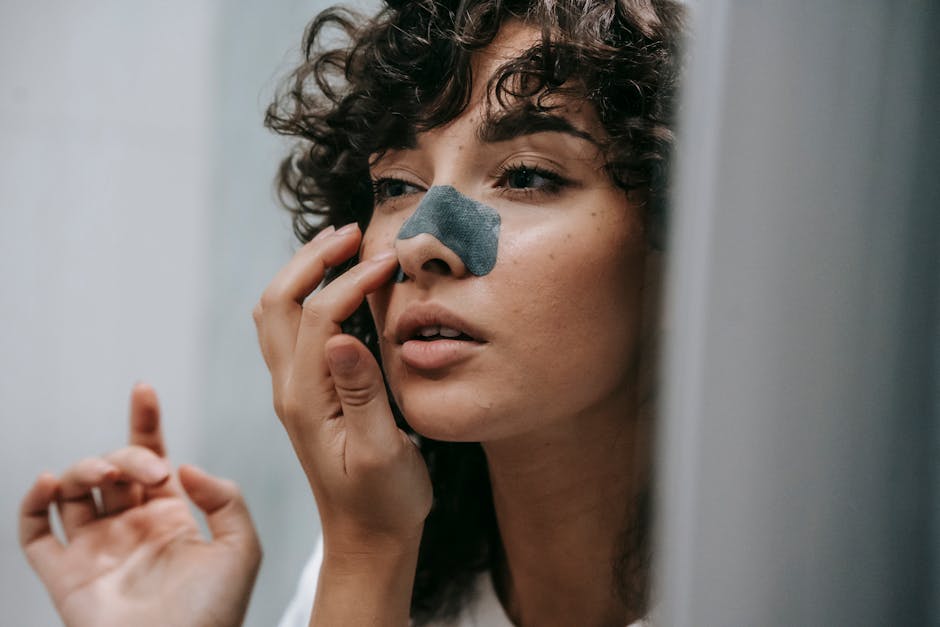Understanding exfoliating peels
Exfoliating peels are skincare treatments that help remove dead skin cells and promote cell turnover, resulting in smoother and more radiant skin. They often contain ingredients like alpha hydroxy acids (AHAs) or beta hydroxy acids (BHAs) that help to unclog pores and improve skin texture. Exfoliating peels can help to reduce acne, hyperpigmentation, and fine lines, giving you a more youthful appearance. It is essential to follow the instructions carefully and consult a dermatologist before trying exfoliating peels to avoid any adverse reactions or skin irritation.
Benefits of exfoliating peels
Exfoliating peels can improve your skin’s texture, making it smoother and more radiant. They help in removing dead skin cells, unclogging pores, and promoting cell turnover, which can result in a brighter complexion. Regular use of exfoliating peels can also help in reducing acne breakouts and minimizing the appearance of fine lines and wrinkles.
Types of exfoliating peels available
Exfoliating peels come in different types such as chemical peels and enzyme peels.
- Chemical peels use acids like glycolic acid or salicylic acid to remove dead skin cells and improve skin texture.
- Enzyme peels are milder, using fruit enzymes like papaya or pineapple to exfoliate the skin gently.
Each type of peel offers unique benefits, so it’s essential to choose the one that best suits your skin type and desired results. Choose wisely for glowing skin!
How exfoliating peels enhance natural beauty
Exfoliating peels can brighten your skin by removing dead cells, revealing a smoother and more radiant complexion. Glycolic acid and lactic acid are common ingredients in exfoliating peels that help in reducing fine lines, wrinkles, and acne scars. These peels also stimulate collagen production, which can improve skin elasticity and firmness. Furthermore, exfoliating peels can fade hyperpigmentation and even out skin tone, giving you a more even and youthful appearance. Regular use of exfoliating peels can lead to a healthier and more glowing complexion.
Preparing your skin for exfoliating peels
Exfoliating peels work best on clean, dry skin. Before applying a peel, wash your face with a gentle cleanser to remove any dirt or oil. Pat your skin dry with a towel. Avoid using any abrasive scrubs or harsh products that could irritate your skin before using a peel.
Step-by-step application of exfoliating peels
To apply an exfoliating peel, start by cleansing your face to remove any dirt or makeup. Apply a thin, even layer of the peel to your skin, avoiding the eye area. Let it sit for the recommended time, usually indicated on the product packaging. Rinse it off with water and follow up with a moisturizer to keep your skin hydrated. Using exfoliating peels can help remove dead skin cells, unclog pores, and improve the overall texture and appearance of your skin.
Safety tips and precautions
When using exfoliating peels, it’s crucial to follow some safety tips to avoid any skin irritation or negative reactions. Here are a few precautions to keep in mind:
-
Always do a patch test on a small area of skin before applying the peel to your entire face.
-
Avoid using exfoliating peels on sensitive or sunburned skin to prevent further irritation.
-
Follow the instructions provided with the product carefully, including the recommended application time and frequency.
-
Make sure to wear sunscreen after using exfoliating peels to protect your skin from sun damage.
-
If you experience any redness, itching, or discomfort after using the peel, rinse it off immediately and consult a dermatologist.
Results and expected outcomes
Exfoliating peels can work wonders on your skin, revealing a smoother and more radiant complexion. They help reduce fine lines, improve skin texture, and even out skin tone. Regular use of exfoliating peels can lead to a more youthful appearance and give you that coveted healthy glow. So, if you want to enhance your natural beauty, incorporating exfoliating peels into your skincare routine can be a game-changer.
Post-peel skincare routine
After a peel, your skin needs gentle care for a few days. Always moisturize to keep your skin hydrated and apply sunscreen daily to protect it from the sun. Avoid using harsh products and be gentle when cleansing your skin. If you experience redness or irritation, consult your dermatologist immediately.
Maintaining the effects of exfoliating peels
To maintain the effects of exfoliating peels, it’s essential to follow a consistent skincare routine that includes gentle cleansing and moisturizing. Additionally, using sunscreen daily can help protect your skin from sun damage, preserving the results of the peel. Hydrating your skin regularly and avoiding harsh products that can strip away moisture will also contribute to prolonging the benefits of exfoliating peels. Remember, consistency is key for keeping your skin looking smooth and radiant after undergoing exfoliating peels.


